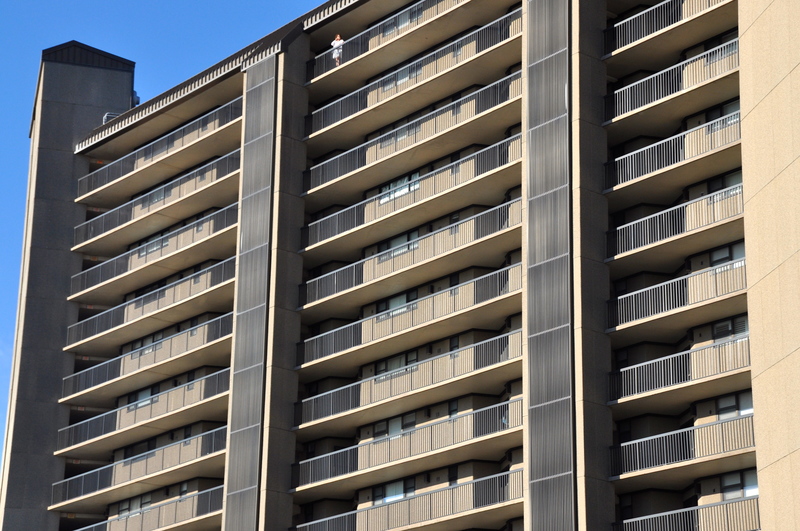Height restriction a tall order for Sussex officials
After a pair of public hearings, Sussex County officials are still contemplating building height restrictions.
Building height has long been limited to 42 feet. Then in 2007 a developer's attorney found wording in county code that permits “semi-public” or “public buildings” to exceed that height, up to 60 feet tall. That sparked a discussion on a more restrictive ordinance that would remove that wording if the building has a public-use such as retail space.
The proposed ordinance would restrict buildings that could be built up to 60 feet to only buildings owned by a political subdivision of the state of Delaware, the federal government or hospitals, institutions and schools when permitted in a zoning district. Churches and temples could be constructed as high as 75 feet.
All buildings exceeding 42 feet require increases in side and rear setbacks of at least one foot for each one foot of additional building height over 42 feet. For example, a building requiring a 10-foot side-yard setback would be required to have a 28-foot setback if built at 60 feet tall.
Height regulations can also be altered by a variance approved by the county's board of adjustment.
After planning and zoning commission's Nov. 14 public hearing, commissioners deferred on a recommendation but agreed the county should take a more comprehensive look at the issue, including a discussion of appropriate locations for taller buildings. Sussex County Council held a public hearing on the matter during its Nov. 19 meeting.
Cole: News to county council
The issue came to the forefront when Councilman George Cole, R-Ocean View, questioned planning and zoning staff about the construction of buildings exceeding 42 feet, which he had previously assumed was the tallest a structure could be in Sussex county. He said he had always assumed that the 60-foot provisions pertained to structures such as hospitals and schools, and not hotels and retail centers.
Cole said he was caught off guard when he found out that site plans had been approved for buildings as tall as 60 feet. A hotel under construction and another planned for the Route 1 corridor will be constructed at 60 feet. Two mixed-use buildings in the Vineyards project near Lewes, also exceed 42 feet.
“This was news to county council, news to planning and zoning and news to the public that this [42 feet] wasn't the rule of the land,” Cole said. “There is a lot of confusion; let's see if we can get it resolved.”
“Are we going back to what we thought we had?” asked Councilwoman Joan Deaver, D-Rehoboth Beach.
“We've got sprawl, and we can do something about it by going up rather than out,” said Councilman Vance Phillips, R-Laurel.
Lawrence Lank, director of planning and zoning, said the provision for 60-foot buildings with semi- public and public use has been in the code since Jan. 1, 1971. “We knew it was there, but it was never utilized, and it was forgotten about,” he said.
That was until 2007 when the developers of the Vineyards project along Route 9 near Lewes built two mixed-use buildings that exceeded 42 feet.
Cole said the way code defines public use, just about any building could be 60 feet high.
Public comments on height restriction
During the public hearing, Kathleen Baker of Rehoboth Beach said, “Sixty is not the new 42.”
She said she and her husband purchased their soon-to-be retirement home in 2008 in Sterling Crossing with the idea they would be surrounded by other homes, not tall buildings. “This is what happens in cities,” she said. She said she moved to Sussex County because of its sprawl.
Dan Kramer of Greenwood disagrees. “If you keep on with sprawl, there will be nothing left. Save the land and build up,” he said.
In a letter to council, Dewey Beach Mayor Diane Hanson wrote that a 2008 referendum vote showed that 86 percent of the resort town's residents supported the town's height limit of 35 feet. She said she supported a height restriction of 42 feet and that all developers abided by by that regulation until recently.
She wrote that a change in building height, especially along Route 1, would bring total gridlock to the area.
In another letter, representatives of Fernmoor Homes, the ground tenant of the Vineyards at Nassau Valley project, wrote that projects with conceptual or preliminary approvals or constructed buildings relying on the current ordinance should be allowed to continue development under the existing ordinance.
“A key factor in analyzing the financial viability of this project was the continued ability to construct mixed-use buildings with a maximum height of 60 feet, which is the regulation utilized to construct the buildings that were in place in 2011 [the year Fermoor became tenant],” the letter stated.
On the recommendation of Planning and Zoning Commission President Bob Wheatley, Sussex officials are looking at planning a workshop in early 2014 to discuss issues such as height regulations. Officials agreed that the workshop should not hold up action on the proposed amended ordinance.






















































